With Marine Power, It's Not the Size of Your Turbine, It's the Motion of the Ocean
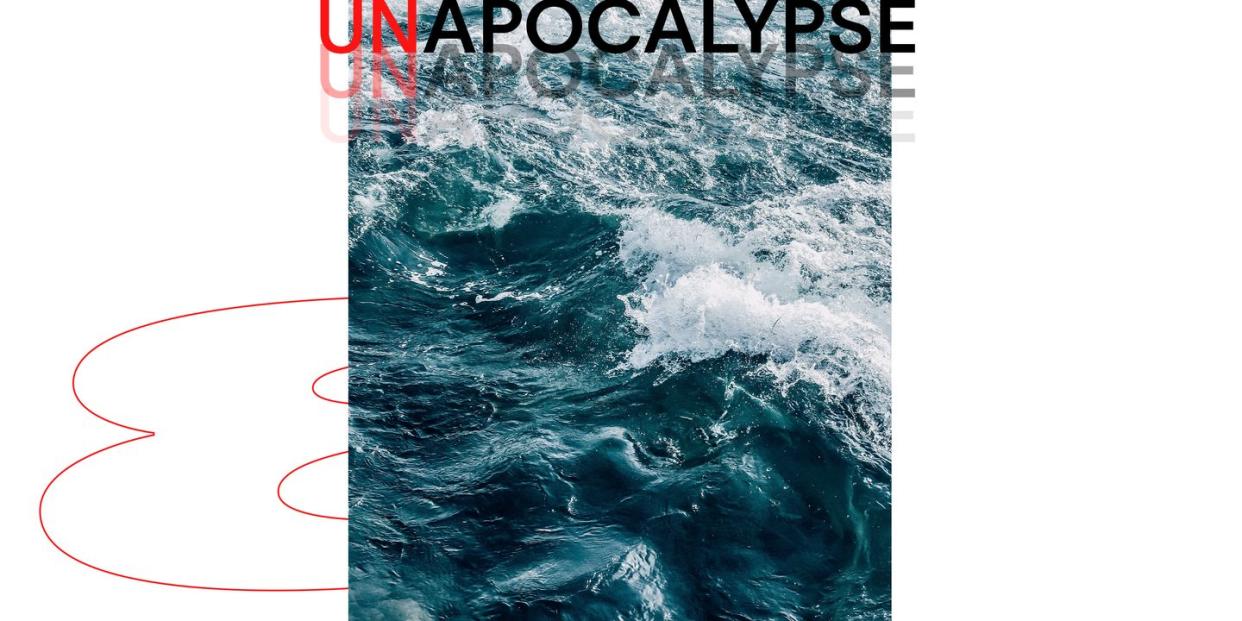
We’ve heard an awful lot of awful news when it comes to the climate crisis. But there are also very smart people working on clever ways for us to dig ourselves out of the hole we’re in. UNAPOCALYPSE is a series from Esquire that highlights ways humans can mitigate and adapt to the damage caused by a changing climate.
You can find last week's edition here.
A big chunk of our clean-energy pie will be wind and solar. Somewhat smaller slices will be geothermal and nuclear and hydropower. But the last part, maybe the last 10 percent or so, might come down to more niche technologies like hydrogen fuel cells and marine power. The latter represents the cutting edge of clean energy R&D, and it’s primarily happening at the Department of Energy, where the Water Power Technologies Office is seeking to develop, test, and tinker with different devices until they’re commercially viable, at which point private firms will take it away. In general, these devices fit into a few main categories: wave, tidal, river current, and gradients.
The applications could be fascinating. As far as providing power for the grid, the hope is that wave technology will be a significant factor on the West Coast, while tidal power could enter the energy mix in the Northeast and Alaska. The river-current technology is an alternative to traditional hydropower that is less disruptive to the surrounding ecosystem because it does not require damming or diverting the river. A lot of the use cases here will also be in micro-grids, where local communities—an island off the coast of Maine, say—could supply their energy needs with technology right offshore. And then there’s marine power’s potential to fuel other work we do in the ocean, such as desalination projects.
Jennifer Garson, director of the Water Power Technologies Office at DoE, and Tim Ramsey, the Marine Energy Program Manager, explained all of that—and how marine energy could play a role in responding to natural disasters—in a conversation edited for length and clarity below.
JH: I understand there are a few different varieties, but how do these marine power setups work?
JG: Marine energy systems are optimized to the type of resources they're trying to capture. That could be tidal, river currents, wave energy. But then there are also systems that are designed to capture what we call gradients. That could be either ocean thermal energy conversion, which is the differential between really deep cold water and the warmer surface water, and salinity gradient, where you design systems to capture power based on the salt difference, for lack of a better term, in water.
With tidal power, you see systems that would look familiar, like smaller versions of wind power turbines. There are examples that sit on the bottom of the ocean floor, that have turbines that capture the power that goes back and forth. There are some systems that float on the surface of the water, but the blades submerge to capture the tides going back and forth.
On wave power, there are a multitude of different types of systems. You're trying to capture the motion of the waves on the bottom of the ocean floor, it would look like flaps; or you have systems that create a water column to generate electricity—those are oscillating water columns; or you have point absorbers that are sitting at or near the surface, generating power by essentially pulling on the anchor to generate electricity.
JH: Which of these is the farthest along?
JG: Probably both domestically and internationally—particularly in the UK, the EU, even in parts of Asia—you see more commercial deployments of tidal power. There's a bit more commercial maturation and more design convergence, I would say, on tidal power in particular.
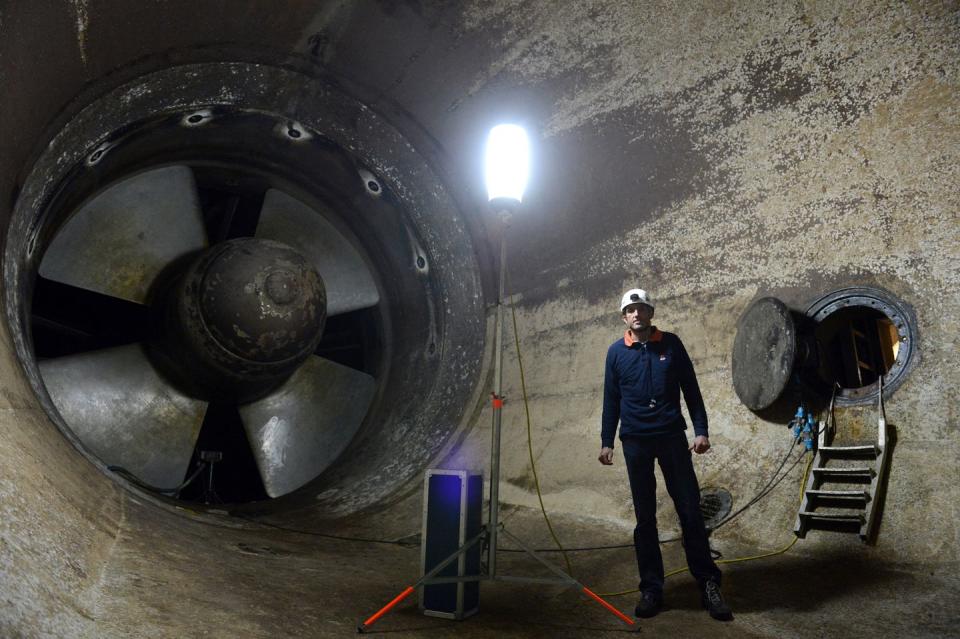
JH: In terms of rivers, this seems like a less disruptive way to harness the potential energy than traditional hydropower.
JG: Yeah, the difference between hydropower and marine or river-current systems is the lack of a dam or diversion. If you have a hydropower facility, you either need to divert the water out of the river and feed back into it, or you have a dam that serves [as] a platform for your technology. Our river-current systems are still capturing that flow of the rivers, but in a free-flowing design. An example of this is ORPC, which is a company out of Maine. They have a system that has these blades that we're testing right now in Alaska that show that they're interacting extremely well with salmon populations. It’s placed on the ocean floor, generates electricity, but does not require that you dam or divert that river.
These river-current systems are trying to capture that resource but without creating systems that need a fish passage solution. Many of these systems are designed specifically to interact with fish or other kinds of river life.
JH: You mentioned testing—it seems like it's difficult to get permitting for tests on some of this stuff. Is that one of the major obstacles?
TR: Both the cost and the time associated with permitting is one of the biggest challenges and hurdles to marine energy. In almost all cases, you're talking about public waters. It's not analogous to solar and wind, where a lot of times it’s [private] land and the permitting process is a lot more streamlined. When you're talking about public waters, you have a lot of regulators involved, both state and federal. You potentially have the Marine NOAA and NIMM fisheries, and any sort of protected marine life that's going to add a lot of costs and time. It also depends on if it's a long-term or a short-term test. With the short term, there are some processes that can speed that up. But it comes down to data and science, and until we get more and more devices in our group, and we understand what those environmental impacts and effects are, it's a little bit of a ‘chicken and egg’ scenario.
JG: But it's why we're investing in a lot of testing infrastructure, both facilities like our Pathway facility off the coast of Oregon, or with other in-water potential test sites along our coast, [like] our marine coastal research lab in Washington. We're looking at a tidal site up in Maine, and we've been working with an in-water site off of the coast of North Carolina doing small-scale wave-power testing.
We're also investing heavily in pre-in-water deployment testing infrastructure, so tanks, flumes—anywhere we can de-risk the technologies if we're putting them into the open water. We have a network program called TEAMER, which is supposed to give access to both researchers and technology developers. That allows them, both at universities and the labs and the private sector assets, access to the testing infrastructure. We're trying to more rapidly accelerate commercial development by making that testing or permitting or siting process easier by investing in the facilities necessary to test these things.
JH: Are there policy solutions, or is this just, “Let’s try and deal with it as it is”?
JG: It's definitely both. For many people in energy, there's a recognition that while everybody knows that there are permitting and regulatory challenges associated with energy writ large, sometimes you have to work within the system that you're given. We do also invest in programs working with regulators themselves. We have an effort to work early and often with regulatory decision-makers. We're going to try to create a toolkit for regulators to make these decisions easier. Are there policy or legislative fixes? No doubt, but we're not the regulatory body. Waters are even more complicated than some of the things that they're trying to tackle through the Manchin permitting bill, to be quite honest.
TR: And one other example, FERC does have a streamlined process for pilot and emerging technologies. Basically, they agree to streamline FERC licensing, but there has to be an ability to pull the equipment out of the water immediately if, say, an environmental impact arises.
JH: I understand the other obstacle is just cost. Is that related to the materials, to the R&D, to permitting?
JG: It is all the above. Especially as you build first-of-its-kind systems, a key challenge is the designer fabrication of systems that aren’t mass produced. Often when you're building a prototype, you're having to go to suppliers, facilities—in our case, ship-building facilities—to build these systems, and that can be expensive. You don't have the advantage of economies of scale.
And the ocean is a really harsh environment. [It’s not just] building a system that can withstand the mechanical forces of the waves. You [also] need to marinize materials, because the ocean is an incredibly corrosive environment.
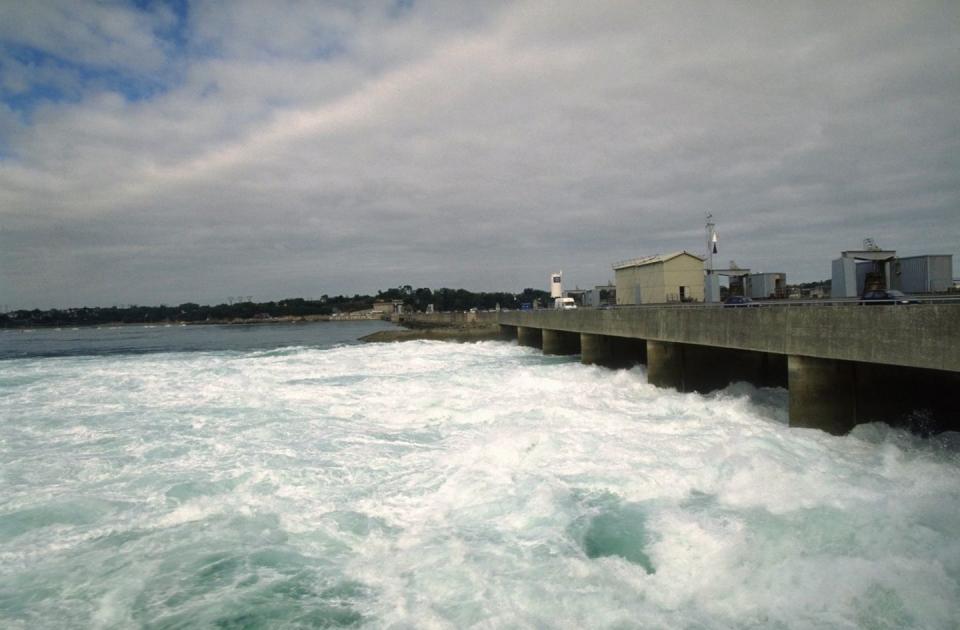
Your materials, your manufacturing, your testing, your permitting are all significant upfront costs, but then again, so is every energy system that's ever been built. There's always that initial, "How do you fabricate and build things when it's first of a kind?" First is trying to do more targeted cost reductions, which is what we look at. “How do we reduce the cost of these systems?" And a lot of it does come when you perfect the design of the device and can actually mass produce these things.
JH: I’ve seen suggestions that you could have a combined facility, where you have solar and wind also involved if you're offshore. How much of those hybrid setups would you like to see?
JG: It all depends on where you're trying to deploy these systems. There are some places where the development of multi-energy technology platforms could have really strong advantages. If you're doing both tidal and offshore wind, I think the development of those types of systems that are hybridized could have huge advantages. The challenge is how do you find the right site, if it's wave and offshore wind, where the wind can withstand the forces but the waves can take advantage of meaningful energy?
We’re also looking at some smaller-scale systems. Can we use wave energy to do environmental monitoring or even aquaculture? There has been a lot of interest in these multi-use platforms for islands, where you're trying to capture every resource possible to provide electricity or fresh water to communities that may not have the land to build out a bunch of solar and wind.
JH: I’ve seen on the Department of Energy website there’s talk you could power a desalination plant with a local marine power source.
JG: A few years ago, we launched our Powering the Blue Economy initiative, and that was in recognition that there are markets and applications that marine energy might really be uniquely suited for: desalination, ocean observing, micro-grids, aquaculture, seawater mineral mining. We need better systems for providing potable clean water to communities. Marine energy has an advantage, both mechanically and, potentially, electrically for desalination. And many of these micro-grid-like systems that you might see in places like Maine or Alaska—marine energy, whether it's river-based or wave-based, might be the only way to actually get these communities off of diesel power, because half the year the wind might be too strong, and half the year solar does not shine enough to provide full year-round power
But ultimately, if you look at the large amount of theoretical resources that we have in waves, particularly on the West Coast, and then globally with tidal and current, we also see a role for marine energy in decarbonizing the grid.
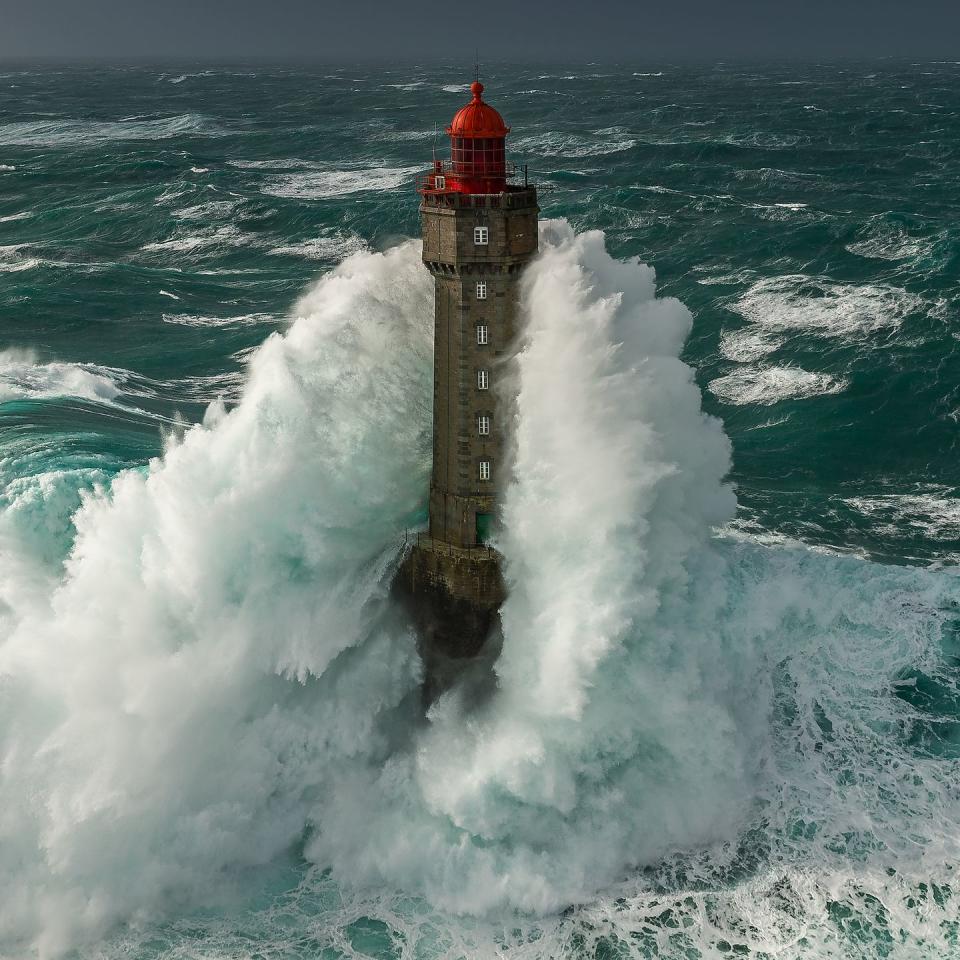
JH: As far as weather risks, we're trying to shore up our coastal communities for what's coming. How do you do the same for this equipment?
JG: Extreme weather events are going to complicate matters. There are two pieces to this. When we think about designing systems, we think about survivability with 100-year events, meaning that we have to design our offshore energy systems to withstand hurricanes or weather events that are on the very extreme. That's not just from an operating perspective, that's also the standards that are being developed. You have to design them to withstand big weather events. But the offshore oil industry has been doing this for decades. It is feasible to design systems for big weather events.
But one of the things that we're looking at is, could some of these systems—whether they’re into breakwater walls or just by nature and design themselves—could marine energy systems actually provide coastal benefits by blunting some of the forces of extreme weather events? Can the siting of it actually help to reduce some of the erosion or coastal harm by being additional infrastructure out in the water? It's not just ‘is it a risk?’ [but] ‘is it potentially an opportunity?’
JH: Like a sea wall that’s producing energy?
JG: Right. Can you have both, basically? This is on the very early research side, but can you design moorings or structures that build up with bio-based materials like mussels and others, optimizing for bio-growth, and then, if they get knocked off with a hurricane, they can grow back again? We have to work in the lab, looking at designing systems almost embracing the chaos of the ocean.
JH: Are there states, countries, companies, specific projects that you hold up as a shining light on this?
TR: You see a lot of progress in U.K., Asia, the U.S., as well. We’re on the cutting edge. Within the U.S., it's mostly coastal areas, but Alaska, Washington, Oregon, Maine. We have four marine centers that are geographically dispersed around the country: We have one in Hawaii, one on the West Coast, one in the southeast in Florida, then we have a new one we stood up last year, the Atlantic Marine Energy Center, which is a combination of New Jersey, New Hampshire, Stony Brook.
There's a test facility that we're currently constructing off the coast of Oregon, Pathway, that's going to be a playground, the plug-and-play area, for wave energy devices to test their performance. It's going to be very connected—the potential to test up to 20 devices and 20 megawatts at one time. That's going to be many years before we fully realize 20 devices at 20 megawatts, but this is meant to be operating for at least 25 years. They have [an] initial 25-year FERC license.
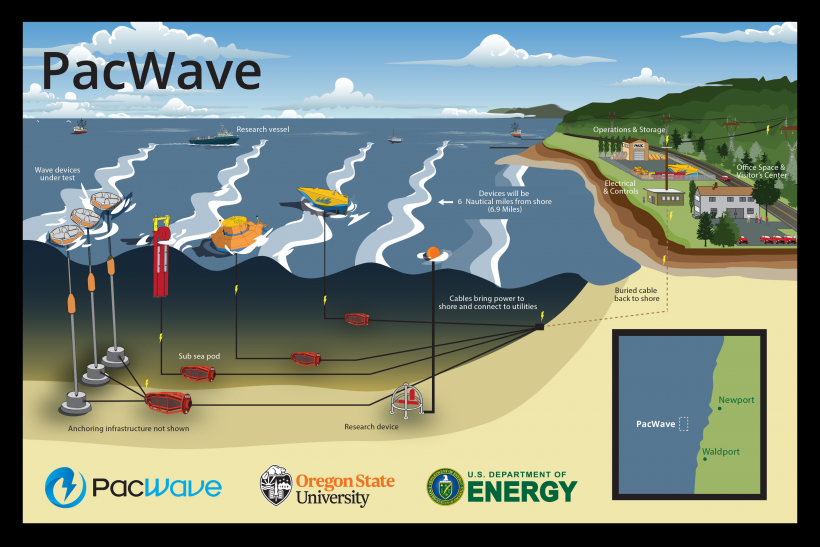
As far as tidal, I already mentioned ORPC, a renewable company. We had a few deployments with them, notably up in Alaska. In Igiugig, they deployed a river-current energy device. Then also in New York, VerdantPower tested a tidal energy device in the East River. Both of those were within the last year, year and a half.
JG: On wave energy, we just had the longest in-water wave power deployment off the coast of California with CalWave. Then we have three different devices that will be going into the water out at the test facility in Hawaii. We do this in partnership with the Navy, but you have Oscilla, Columbia Power and Ocean Energy getting ready to test their systems in the water.
We have a lot of things going into the water, which sounds trite, but it’s extremely complicated for us to have even gotten to this place to actually do in-water deployments. It's taken a lot of engineering, science, research, and partnerships to realize so many in-water demonstrations.
We have a solicitation open right now, a $10 million solicitation primarily focused on wave power desalination. We have the conclusion of our Waves to Water Prize, which was maturing a number of solutions looking at wave power desalination, specifically for disaster relief-and-recovery in small communities.
JH: That last one, responding to disaster areas—the idea is you would plop this near a disaster area and you harness the power, desalinate the water so people have clean water to drink after a hurricane?
JG: Correct. We looked at requirements from disaster relief-and-recovery organizations, in terms of how quickly do you have to deploy things, how do you think about ease of assembly. These systems would be pretty robust, shipped in a shipping container to a site and then either plopped in with a big chain anchor, or you would have [an] existing mooring to clip the system in and out to produce water that would go to shore.
I love that prize, it was sort of my baby. I can tell you a lot about wave power desalination for disaster relief-and-recovery scenarios because that was a lot of my work before I became the director.
JH: You mentioned you have a lot of things that just went in the water. What is the timeframe for learning about their viability out in the wild?
JG: It all depends on what type of system and what you're trying to learn. The way that we've been structuring most of our in-water deployments coming up, it will be between six months and a year. We do a lot of work on instrumentation, both on the device and checking up on the devices to understand their performance, whether that's power production, bio-fouling, how are they interacting with the marine environment.
TR: We are an R&D organization. We are not going to be the ones to fund a five-year commercial project for any energy device. We're trying to prove the technology and reduce the cost and increase the performance to a point where the economics make sense, and it can be picked up by project developers, private industry, and they say, "Yes, we want to deploy this and this fits within our roadmap, our portfolio, our renewable energy aims, our needs and it makes sense to deploy long term."
JH: You suggested earlier that marine could be the last 10 percent of the energy transition. What does this look like in your wildest dreams down the line?
The strongest resources for wave energy are on the West Coast, which is where I think there's the most opportunity from a development perspective. Seasonally, there is an advantage because at times, you might have less expectation of the performance of solar. Wave energy in the winter is at its strongest. That's why it is so complicated to run systems even at the Pathway facility. These waves are huge. If you can capture that power for waves, it really provides a nice seasonal complement to a portfolio of solar and wind.
For tidal power, it is entirely predictable. We know when the tides are coming in and out. It gives you an additional base-load power that you can pull from, particularly in a fully decarbonized grid. In the Northeast and absolutely in Alaska, tidal power could provide a good base load and potentially a significant portion of their power.
TR: We'll see large devices providing true grid-scale power, utility-scale. But then you will see a lot of local micro-grid communities taking advantage of marine energy. Beyond that, there's a whole other suite of end-uses in and around the ocean. Just one example is ocean observing systems. NOAA, as an example, has hundreds and hundreds of ocean observing systems out in the ocean at any given time, and we're working pretty closely with them on replacing their existing power with marine energy.
JG: We're at a time of huge investments. In addition to the funding that we receive each year—we were at $112 million this past year from Congress—but because of a bipartisan infrastructure law, Congress also directed another $110 million for marine energy research and development specifically. Marine energy under previous production tax credits could only get half the production tax credit. Nobody was quite sure why. We now can actually realize the full production tax credit. Also, many of the systems that we're looking at in small communities are less than five megawatts, and there are specific provisions in IRA for less than five megawatts.
In terms of an overall percentage, I would love for it to be the full bottom 10 percent [of the energy mix], but it might just still be just too soon to tell, to be honest. I want to be realistic while also being optimistic.
You Might Also Like

